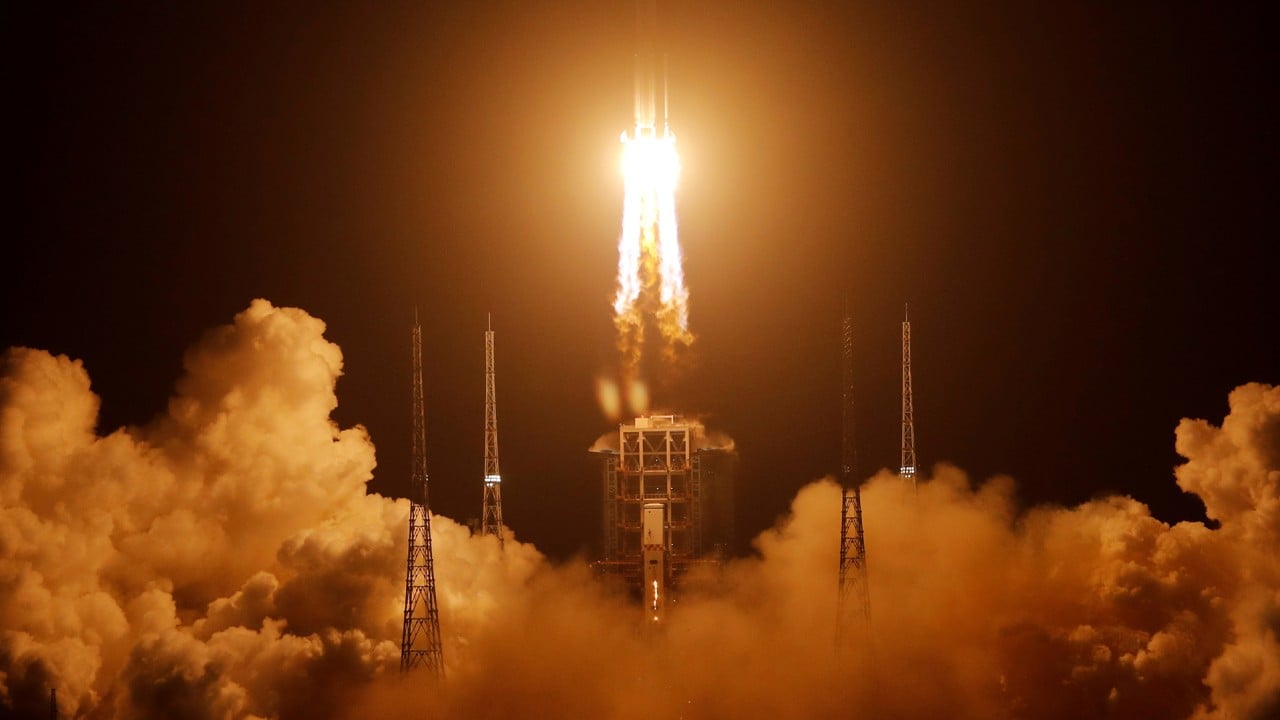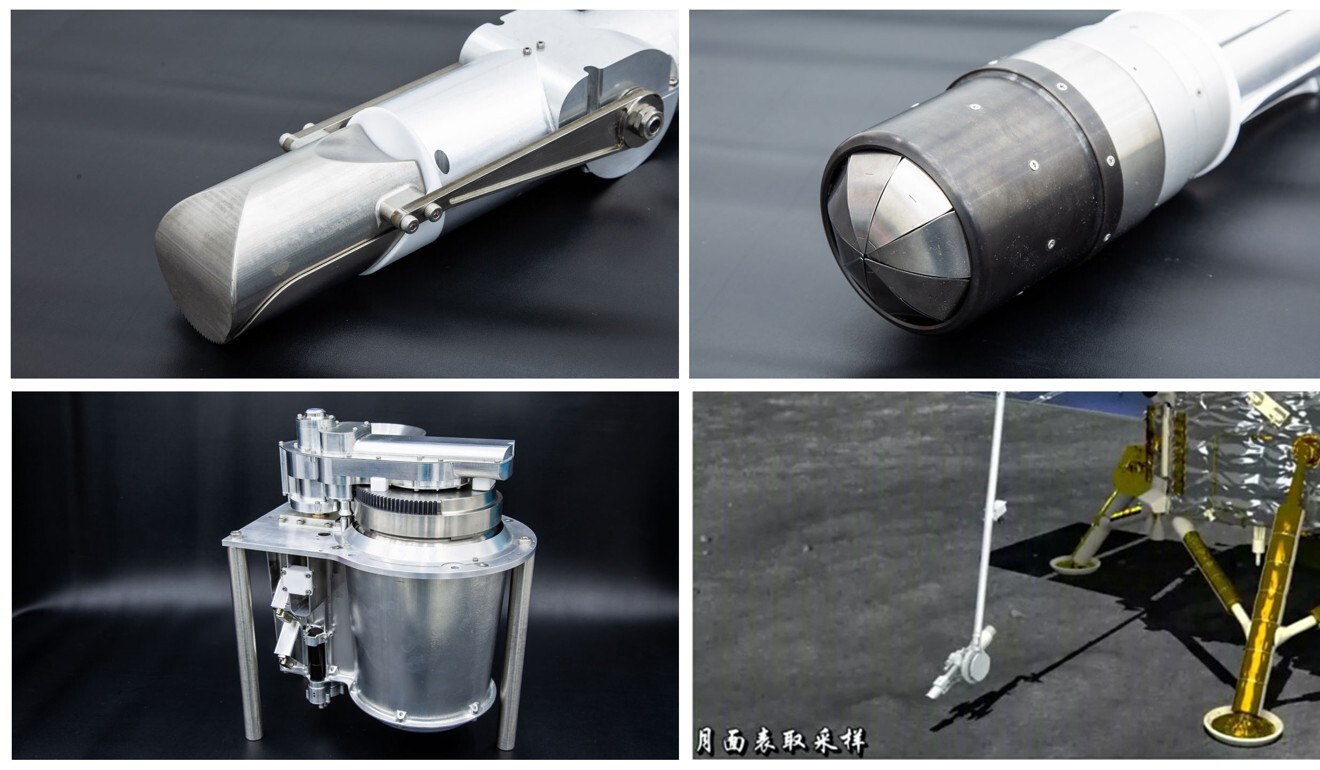
How China’s Chang’e 5 could take giant leap for world’s space missions
- Other countries may learn from its sampling of lunar rocks and soil for their own space programmes, including Mars exploration
- The mission, using tools designed in Hong Kong, is the first attempt by any country to collect lunar samples in more than 40 years
“In sampling on the moon surface, the most valuable are those special rocks,” Professor Yung Kai-leung of Hong Kong Polytechnic University said. “The composition of the surface dust is more or less the same, but the rocks are different – they have much higher scientific value.”
“We will use our system’s near-field cameras for vision guidance in selecting samples that we are interested in,” said Yung.
The samplers and container developed by Yung’s team at Hong Kong Polytechnic University are at the core of the Chang’e 5 mission to sample lunar rocks and soil – the first attempt by any country in more than 40 years since mankind’s last lunar mission in 1976. It is the most ambitious mission of China’s lunar programme.

01:34
China launches Chang’e-5 mission to bring back rocks from moon
If successful, other countries may look to China’s sampling experiences for their own space programmes, including future Mars exploration, other scientists have said.
The Chang’e 5 mission aims to collect 2kg (4.4 pounds) of material on the moon’s surface, in addition to a smaller 500-gram sample from two metres (6.6 feet) below the surface gathered by a different drilling system, according to China’s state television report.
The surface sampling and packing system developed and manufactured by Yung’s team includes two samplers, two heat-resistant near-field cameras, and a packaging and sealing system for the protection of the samples stored in a container. The system is mainly made of titanium alloy and aerospace aluminium alloy, according to Yung.
China’s largest carrier rocket launch first such mission by any country since 1970s
One of the samplers, of about 35cm (14 inches) in length, is specially engineered for the collection of loose surface samples, or regolith. It can shovel target samples, discard unwanted debris, secure the selected samples and deposit them into the container.
The other sampler, about 30cm in length, is to be used for collecting sticky samples by digging and pushing them into the container.
The Chang’e 5 lander is expected to land at the Mons Rümker mound, which is among the youngest volcanic areas on the moon. Scientists estimated that volcanoes in the areas last erupted about 1.3 billion years ago. Previous samples collected by US and Russian space programmes were from regions about 3.5 billion years old or older.
“We want to understand what’s inside the moon by studying the lunar materials that had been brought to the surface through eruptions,” Yung said.

In the six years of developing the sampler system, Yung’s team has overcome many challenges of the moon’s tough conditions: high static electricity – a source for sticky surface materials that could interfere with various parts of the devices, zero atmosphere and huge temperature difference. The two samplers are capable of withstanding heat as high as 200 degrees Celsius (392 degrees Fahrenheit).
While different astronomical objects have different characteristics posing unique engineering challenges, Yung said there are some common technologies and designs applicable to systems sampling the moon or Mars.
“The devices need to be able to withstand the impact during lift-offs, the deep space environment, the impact and shock at landing, high temperature difference, exposure to cosmic rays, and weight control,” he said.
China boosts its ambitious space programme with powerful antenna array
Yung explained that the mission target of returning about 2kg of lunar samples was the maximum load for the Chang’e 5 spacecraft.
“Otherwise, you will need a bigger rocket, a stronger ascent vehicle [to lift off with the samples from the moon] and the whole system will just have to be bigger,” he said, adding that the mission represents a huge progress in technology.
The three Soviet Luna missions, which also used robots for sampling, returned a total of 301 grams (0.7 pounds). The US Apollo programme brought back more than 380kg (838 pounds) in six space flights with the help of astronauts on the moon.

The next lunar mission, Chang’e 6, will also focus on sampling the moon using the sampler system developed by Yung and his team. Previous reports said that the target site of the mission, which is expected to launch in 2023 or 2024, will be around the moon’s south pole.
Singaporeans in space: the start-ups powering city state’s ascent
“The location [of Chang’e 6] has not been decided yet and it will depend on what we will find from the samples we get from this mission,” Yung said.
There are still a few days before the lander will land on Mons Rümker and starts collecting samples as early as next week. And there are uncertainties that will affect the success of the most sophisticated mission of the Chang’e programme.
“For example, the probe may not land on a flat surface. The regolith may be sticky and cannot be deposited into the container smoothly … or something may interfere with the device and that would be big trouble,” Yung said. “It is very difficult to sort things out when it is so far away … and there are a lot of uncertainties,” he said.

